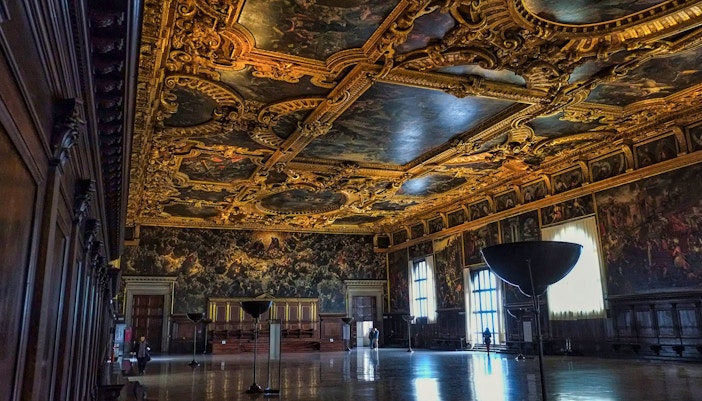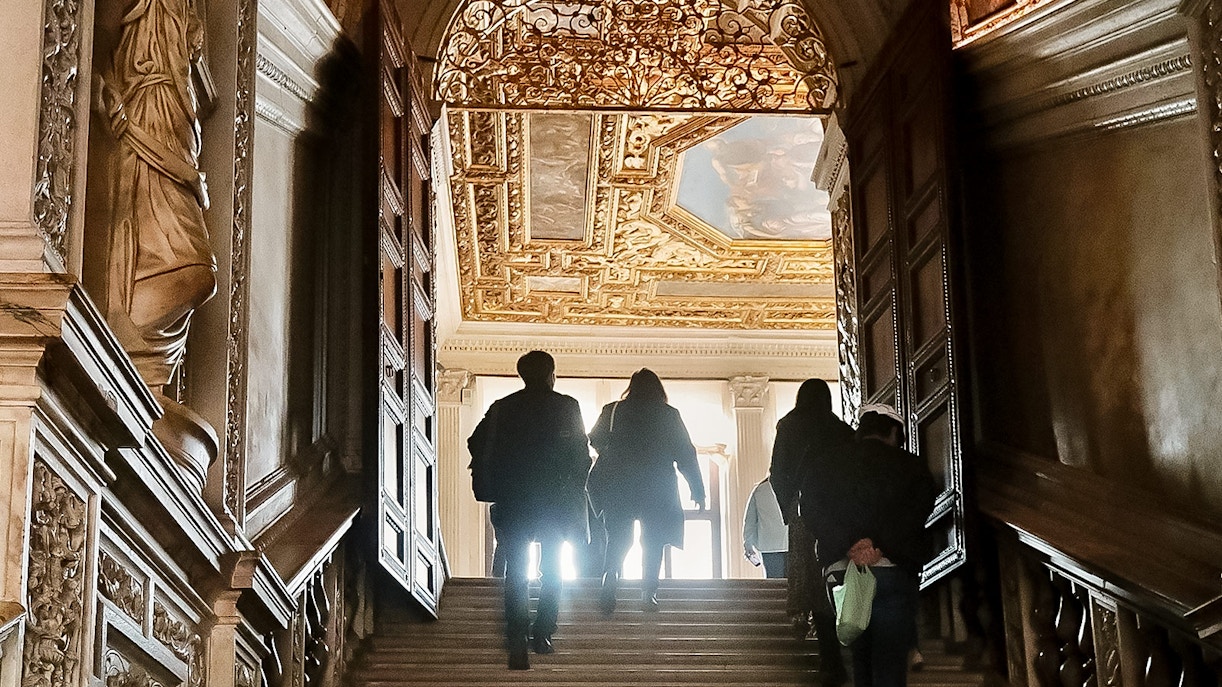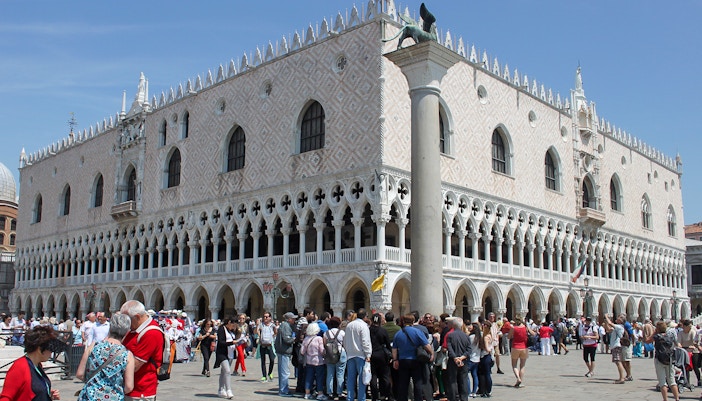The public entrance to Doge’s Palace is through the Porta del Frumento, via the colonnade under the 14th-century waterfront façade. This floor houses public services, the Museo dell’Opera with architectural fragments and sculptures, temporary exhibition spaces in the former kitchens, and the old prisons known as the "Pozzi."
























